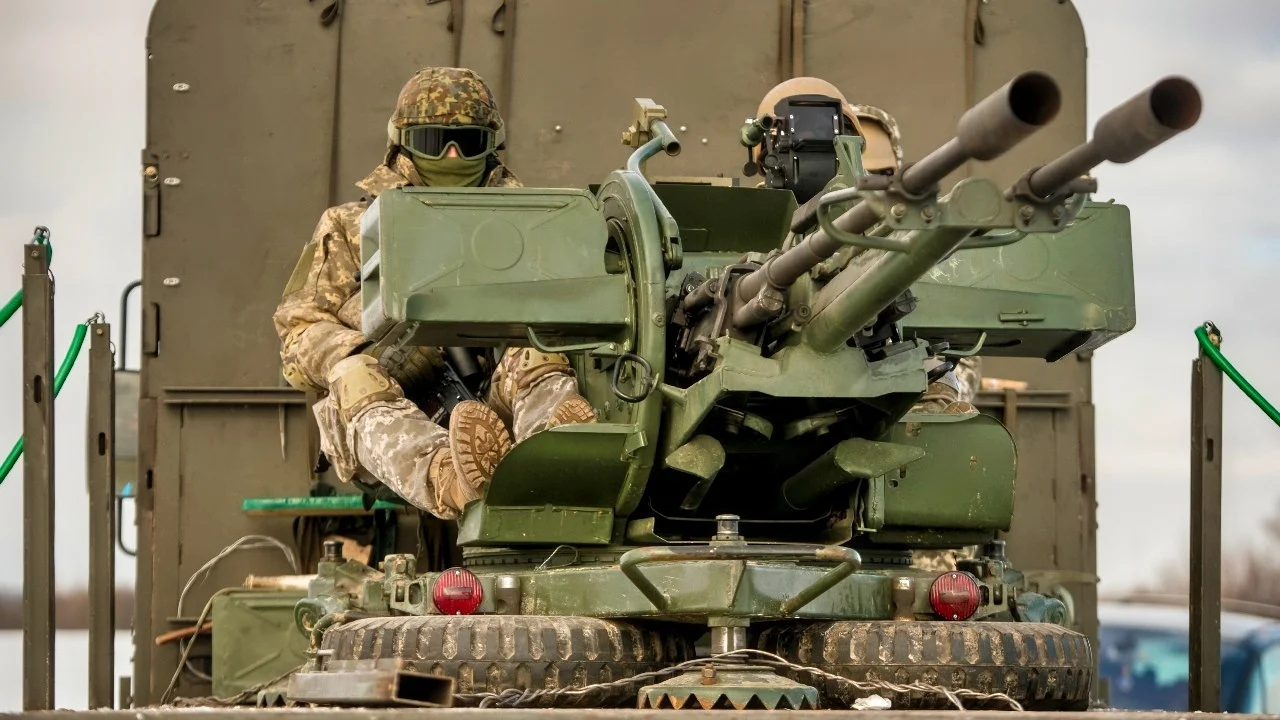The Philippines Navy has received several advanced unmanned surface vehicles (USVs) from the United States, marking a major step toward enhancing the country’s maritime defense amid China’s rising provocative actions in the South China Sea.
This transfer, made through US Foreign Military Financing (FMF), aims to help the Philippines defend its exclusive economic zone (EEZ) and sovereignty in the contested waters of the South China Sea.
US Secretary of Defense Lloyd Austin and Philippine Secretary of National Defense Gilberto Teodoro announced the move during a press conference in Palawan on November 19, during which they witnessed a demonstration of the newly acquired technology.
The USVs delivered to the Philippines Navy are MANTAS T-12 systems from Maritime Tactical Systems (MARTAC). According to Austin and Pentagon officials, the T-12 USVs represent a key capability in enhancing the Philippines’ ability to operate throughout its EEZ and defend its rights in the region.
“The T-12 is a key capability used by Philippines forces to protect its sovereignty and operate throughout its exclusive economic zone in the South China Sea,” the Pentagon stated in its release.
However, the exact number of drones provided to the Philippines has not been disclosed. The MANTAS T-12 is a 3.6-meter-long unmanned surface vessel that can carry up to 64 kilograms of payload, making it suitable for a wide range of missions.
These include surveillance, swarming operations, and electronic warfare. Equipped with advanced powertrain and payload management systems, the T-12 can be deployed from shore, ships, or boats, making it a versatile tool for maritime defense.
Additionally, the T-12 can integrate above and below-surface sensors, including electro-optical cameras, sonars, light detection, ranging systems, and acoustic modems, expanding its operational capabilities.
A standout feature of the T-12, highlighted by MARTAC, is its “gator mode,” which allows the vessel to partially submerge for stealth missions, further enhancing its strategic value.
The complete specifications of the Philippines Navy’s T-12 variants are not yet revealed. However, a photo from the service’s recent Asymmetric Warfare Symposium displays an electro-optical/infrared (EO/IR) system and a Starlink terminal mounted on the drone, indicating improved surveillance and communication features.
This transfer of unmanned surface vehicles is part of a broader defense cooperation between the US and the Philippines. Secretary Austin confirmed that more unmanned surveillance platforms are expected to be delivered to the Philippines through a US$500 million FMF package, which was announced during his visit in July.
“We expect to see many more platforms like this delivered with the US$500 million in FMF that I announced during my visit in July to help ensure that the Philippines has the capabilities and means to defend its rights and its sovereignty throughout its exclusive economic zone (EEZ),” Austin said.
US Military Leader Warns Against Relying Solely On Drones For Pacific Defense
While the Pentagon has highlighted the importance of unmanned surface vehicles (USVs) in enhancing the Philippines’ ability to protect its sovereignty and operate within its exclusive economic zone in the South China Sea, a senior US military official has warned that the challenges in the Pacific cannot be addressed solely through drones.
In recent years, experts have drawn comparisons between the potential for a Chinese invasion of Taiwan and Russia’s ongoing military aggression in Ukraine.
Some analysts have suggested that Ukraine’s use of drones and cutting-edge technologies to counter Russia’s much larger military could offer insights into how such tactics might be applied in a Taiwan invasion scenario.
However, a top-ranking US military leader has made it clear that smaller unmanned systems may be effective in more confined environments. However, any conflict with China in the vast Indo-Pacific region will still require US forces to maintain critical air and maritime superiority.
Adm. Sam Paparo, commander of US Indo-Pacific Command (INDOPACOM), stressed on November 20 that unmanned platforms alone would not be sufficient in the vast expanse of the Indo-Pacific.

He pointed out that even if drones were deployed in the Taiwan Strait to counter a Chinese invasion, US forces would still need to support these systems from Okinawa, which is about 436 nautical miles away. This large distance would require surface assets to secure vital sea lanes.
Paparo expressed concern over what he referred to as the prevailing “either-or” mentality, where some believe drones alone can replace traditional defense systems.
He pointed to Ukraine’s experience as a cautionary tale. The conflict has involved both new technologies, like drones, and old-school strategies, such as the need to control the air and ground.
In discussing this, he noted that while Ukraine has made progress in electronic warfare and new tactical approaches, these lessons do not mean that the US can afford to abandon its air and maritime superiority in the Pacific.
He remarked that drones alone cannot solve everything, highlighting that China’s formidable military assets, including a large fleet of 2,100 fighters, three aircraft carriers, and 200 destroyers, should not be overlooked.
When asked about the Pentagon’s Replicator initiative, which involves deploying thousands of unmanned platforms next year, Paparo declined to provide specifics but hinted that these platforms might be integrated into ships and aircraft.
While Paparo acknowledged the role of unmanned platforms in performing high-risk tasks, he added that humans, not drones, must still make decisions in a potential conflict.





